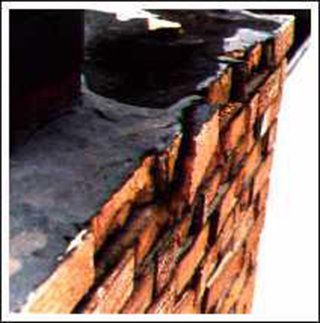Water Damage
As odd as it may seem, water causes more damage to masonry chimneys than fire.
Water penetration can cause interior and exterior damage to your home and masonry chimney including:
- Spalled and broken brickwork
- Deteriorated metal or masonry firebox assemblies
- Rusted damper assemblies
- Rotted adjacent wood and ruined wall coverings
- Deteriorated central heating system
- Decayed mortar
- Cracked flue liner systems

PREVENTING WATER DAMAGE
Following are the four main ways to prevent water damage.
2.) Repair or replace a damaged chimney crown.
3.) Repair or replace flashing

IN CONCLUSION:
Water damage to masonry chimneys is usually a slow, subtle process. The problem is often not evident until it has become quite serious.

